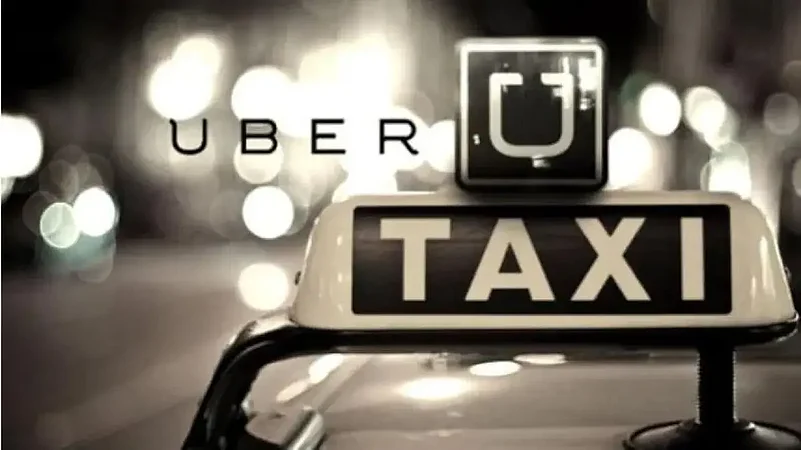A recent investigation into Uber has accused the ride-sharing app of using?illegal tactics, ‘Kill switch’ technology, and political lobby to save itself from regulators and expand its business in India among other countries. Termed ‘Uber Files’, the investigation has started a conversation around the 2014 Delhi rape case by a Uber driver and how the company shifted blamed on the “flawed” background checks of drivers in the country that led to the incident. ?
'Uber Files': A Look Back At 2014 Delhi Rape Case, Uber's Response And Fresh Revelations
Internal emails and around 1,24,000 documents revealed how the company’s staff in its San Francisco headquarters panicked following the sexual assault inside an Uber cab by its driver in Delhi on December 5.

Internal emails and around 1,24,000 page-documents published in The Guardian and shared with The Indian Express -- ?which is a part of the International Consortium of Investigative journalists -- revealed how the company’s staff in its San Francisco headquarters panicked following the sexual assault inside an Uber cab by its driver in Delhi on December 5.
On December 8, Mark McGann, the then Uber’s Head of Public Policy for Europe and the Middle East, wrote, “We’re in crisis talks right now and the media is blazing…The Indian driver was indeed licensed, and the weakness/flaw appears to be in the local licensing scheme.’’?
What happened in December 2014?
A 27-year-old woman was allegedly raped on the night of December 5 when she was returning to her home in Northwest Delhi's Inderlok area from Gurgaon after dinner with her friends. The survivor, who then worked at a finance company in Gurgaon, had slept off in the backseat of the car. On waking up, she found the driver, identified as Shiv Kumar Yadav, molesting her. The car was stopped at a secluded place and when she tried to raise an alarm or flee, she was thrashed and raped.
Later, the driver had given her death threats if she dared to tell anyone about the incident. However, she had clicked a picture of the car’s number plate and then made a call to the police control room and reported the incident, according to a report by The Hindu.?
Subsequently, a case was registered at the Sarai Rohilla police station under sections 376 (rape), 323 (voluntarily causing hurt) and 506 (criminal intimidation) of the Indian Penal Code (IPC).?
“We have identified the cab company and the driver, who is in his mid 30’s and raids are being conducted to nab him,” a police official informed.
How the case unfolded
On December 7, the Delhi Police arrested Yadav from Mathura, Uttar Pradesh. The next day he was produced in court but refused to appear for the Test Identification Parade. Yadav, then 30-year-old, was later sent to police custody in another forgery case for allegedly procuring a fake character certificate.
On December 17, 19 days after the incident, the police filed a charge sheet against Yadav in the rape case. A special fast track court began hearing the arguments on framing charges in the case on January 9.
According to a report by The Quint, Yadav also had a previous rape charge against him in 2011. While that case had ended in an acquittal due to lack of evidence, the Delhi Police had arrested Yadav and held him for six months. In 2004, the driver was charged with sexual assault in Uttar Pradesh's Mainpuri, the report states.
In October 2015, Yadav was held guilty on charges of rape and convicted for offences under Sections 376(2)(m), 366, 323 and 506 of IPC.
Why did the victim sue Uber?
Meanwhile, Uber was secretly collecting private medical information of the survivor, according to several reports accessed by media in 2017.
In December, of the same year, the woman filed a new defamation suit in the US, after Uber claimed an investigation into the complaint and claimed that she might have been making up incidents to defame the company.?
Uber’s Asia business head shared the survivor's record with CEO Travis Kalanick. Kalanick claimed that the incident could have been a ‘sabotage attempt’ by Uber’s competitor in India -- Ola.
"Uber executives duplicitously and publicly decried the rape, expressing sympathy for the plaintiff, and shock and regret at the violent attack, while privately speculating, as outlandish as it is, that she had colluded with a rival company to harm Uber's business," the civil lawsuit, later settled by Uber, said.
What do the Uber Files reveal in this context?
The rape incident resulted in a “worst-case scenario” for Uber in the national capital. The Delhi government banned its services, and it took seven months and an intervention from the Delhi High Court for Uber cabs to be back on the roads.?
In the aftermath of the Delhi rape case, the new safety features the company introduced, including the “panic button” in every cab, are still not in place, as per The Indian Express report.?
Following the incident, Niall Wass, then Uber’s Senior Vice President for Europe, the Middle East and Africa wrote, “We had done what was required in terms of the Indian regulations. However, it’s clear the checks required for a driver to obtain a commercial license from the authorities now appear to be insufficient as it appears the accused also had some previous rape allegations, which the Delhi police check did not identify (in what’s called a ‘character certificate.’).”
However, the report reveals that one of Uber’s communication managers, Benjamin Novick, wrote an email about how the new feature should not be called a ‘panic button’ but an ‘SOS’ feature instead.
- Previous Story
 Marital Rape 'A Social Issue Not Legal', Centre Files Affidavit With SC Against Criminalisation
Marital Rape 'A Social Issue Not Legal', Centre Files Affidavit With SC Against Criminalisation - Next Story
























